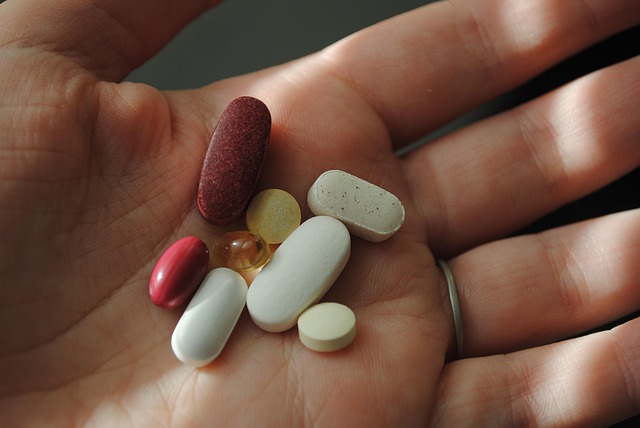Introduction: Your Gut Talks to Your Bones
Think your bones are isolated? Think again. Deep within your gut resides a bustling metropolis of trillions of microorganisms – the gut microbiota. Groundbreaking research reveals these microbes aren't just digesting food; they're engaged in constant communication with distant parts of your body, including your skeleton. This intricate, bidirectional relationship is known as the 'gut-bone axis', where gut health influences bone structure, and bone health can potentially signal back to the gut.
How Gut Microbes Shape Bone Health: Key Mechanisms

How exactly do these tiny gut residents influence mighty bone? Researchers are uncovering several key pathways through which the gut microbiota exerts its effects:
- Fueling Bone Cells with SCFAs: Gut bacteria ferment dietary fiber, producing beneficial compounds called Short-Chain Fatty Acids (SCFAs), like butyrate, propionate, and acetate. These SCFAs enter the bloodstream and can directly encourage bone-building cells (osteoblasts) and discourage bone-breakdown cells (osteoclasts).
- Calming Systemic Inflammation: A balanced gut microbiome helps regulate the immune system. However, an imbalance (dysbiosis) can trigger chronic, low-grade inflammation throughout the body. This systemic inflammation is detrimental to bones, often accelerating bone loss by promoting osteoclast activity.
- Modulating Nutrient Absorption: Gut microbes play a role in absorbing essential bone-building nutrients like calcium and vitamin D. A healthy gut enhances absorption, while dysbiosis might impair it.
- Direct Molecular Signals: Some bacterial components (like lipopolysaccharides - LPS) or the metabolites they produce might directly interact with bone cells or immune cells influencing bone, affecting how they grow, differentiate, and function. The precise nature of these interactions is an active area of research.
SCFAs: Microbial Messengers to the Skeleton
Short-Chain Fatty Acids are star players in the gut-bone dialogue. Butyrate, in particular, has garnered attention. Studies (primarily in vitro and in animal models) show it can stimulate the activity and formation of bone-building osteoblasts while simultaneously dampening the activity of bone-resorbing osteoclasts. The mechanisms are complex, involving energy supply for bone cells, epigenetic changes, and influencing critical cell signaling pathways.
Think of it like this: when gut bacteria feast on fiber, they produce valuable SCFAs:
Dietary Fiber + Specific Gut Bacteria → Fermentation → SCFAs (Butyrate, Propionate, Acetate, etc.) → Circulation → Bone CellsGut Dysbiosis and Osteoporosis Risk
Osteoporosis, characterized by low bone mass and structural deterioration leading to fragile bones, appears linked to an unhealthy gut. Studies comparing individuals with osteoporosis to healthy controls often reveal significant differences in their gut microbial compositions. Frequently, this involves a decrease in beneficial, SCFA-producing bacteria and an increase in microbes associated with inflammation. This shift towards dysbiosis may contribute to the inflammatory state that drives excessive bone resorption.
Therapeutic Horizons: Targeting the Gut for Stronger Bones
This exciting connection opens doors for novel bone health strategies. Modifying the gut microbiome to favor bone health is a promising avenue being actively explored through:
- Dietary Interventions: Emphasizing fiber-rich foods (fruits, vegetables, whole grains) to nourish beneficial, SCFA-producing bacteria.
- Prebiotics: Consuming specific types of non-digestible fibers (like inulin or FOS) that act as selective fuel for beneficial microbes.
- Probiotics: Supplementing with live, beneficial bacteria strains. Research, mainly preclinical, suggests certain strains (e.g., specific *Lactobacillus* or *Bifidobacterium* species) may improve bone density or reduce bone loss.
- Synbiotics: Combining prebiotics and probiotics.
- Fecal Microbiota Transplantation (FMT): Transferring gut microbes from a healthy donor (currently highly experimental for bone health indications).
Crucially, the effects of probiotics are often strain-specific. The effectiveness observed with one bacterial strain doesn't automatically apply to others. Much more robust human clinical trial data is needed before these approaches become standard clinical recommendations for preventing or treating osteoporosis.
Conclusion: A New Frontier in Bone Health
The gut-bone axis represents a paradigm shift in understanding skeletal biology. Recognizing the profound influence of our gut microbiome on bone remodeling opens up exciting possibilities. Future research focusing on deciphering precise mechanisms, identifying key microbial players, and conducting large-scale human trials will be vital to translate these discoveries into safe and effective gut-targeted therapies for building and maintaining strong, healthy bones throughout life.